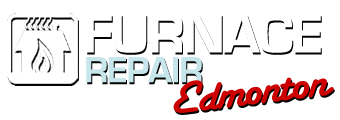Discover How Furnace Works
Find out how furnace works in as easy as 1, 2, and 3.
 For most homeowners who own an older model heating system, it probably is a furnace. Considered as among the oldest and most widely used home heating system there is, the modern day furnace has been through a lot over the years. During its earlier days, homeowners often used wood and coal to fuel their furnaces. As the years go by, and the HVAC industry experienced significant changes and advancements, newer models started using gas, electricity or propane for them to work. These later models boast of higher efficiency levels than its older counterparts. The Annual Fuel Utilization Efficiency (AFUE) rating is used to determine a furnace’s energy efficiency. These new models can have an AFUE rating as high as 98%, which means they can convert 98% of the fuel they use into usable heat. So, that’s 98 cents of usable heat for every dollar spent on energy. Now, you’d understand so much more about it if you simply know how heating systems work.
For most homeowners who own an older model heating system, it probably is a furnace. Considered as among the oldest and most widely used home heating system there is, the modern day furnace has been through a lot over the years. During its earlier days, homeowners often used wood and coal to fuel their furnaces. As the years go by, and the HVAC industry experienced significant changes and advancements, newer models started using gas, electricity or propane for them to work. These later models boast of higher efficiency levels than its older counterparts. The Annual Fuel Utilization Efficiency (AFUE) rating is used to determine a furnace’s energy efficiency. These new models can have an AFUE rating as high as 98%, which means they can convert 98% of the fuel they use into usable heat. So, that’s 98 cents of usable heat for every dollar spent on energy. Now, you’d understand so much more about it if you simply know how heating systems work.
Homeowners often don’t have an idea how furnaces work. And this relative cluelessness makes their lives more difficult especially during a breakdown. Regardless of what type of furnace you have at home, all of them operates using the same principle, forced air heating. Simply put, the furnace transfers the heat to the air that is then sent to the ductwork by the blower fan, out into your vents and your living space. Check out the short rundown of how the various types of gas furnace work.
- Natural gas furnace – it works after the pilot light ignites several burners within the combustion chamber. As the burners ignite, they generate heat that goes inside the heat exchanger. Then, this heat transfers to the air and makes it hotter so it can reach the set temperature on the thermostat. By this time, the blower takes the air and sends it in the direction of your home’s ductwork. If you have a propane-powered furnace, it works in a similar way.
- Electric furnace – instead of a pilot light, the heating process is started by an electrical ignition. This ignition starts activating the heating elements containing the conductive coils. While the current goes through the coils, they start heating the air that is passed onto the blower. More heating elements are activated depending on the amount of heat set on the thermostat.
It may sound too simple and easy, but for an average homeowner like you, bear in mind that a furnace has lots of components to guarantee that the exchange and distribution of heat run smoothly without compromising your health and safety. You are not advised to diagnose or repair a faulty thermostat unless you are a professional HVAC technician yourself armed with the right tools to do the job right. Trust on heating experts to fix whatever is broken in your furnace, regardless of its source. It is important that you hire a professional to take a look at whatever issue you are having with your furnace, especially in the case of carbon monoxide leaks, where you cannot smell, see, or taste them. So, you have no idea if there is already a leak in your home unless you have a carbon monoxide leak detector. Meanwhile, high voltage shocks is a constant threat to electric furnaces.
If you know how furnaces work, you’ll be able to use them properly, and it will also be easier for you to look after them to avoid experiencing frequent and costly issues with your furnace.
